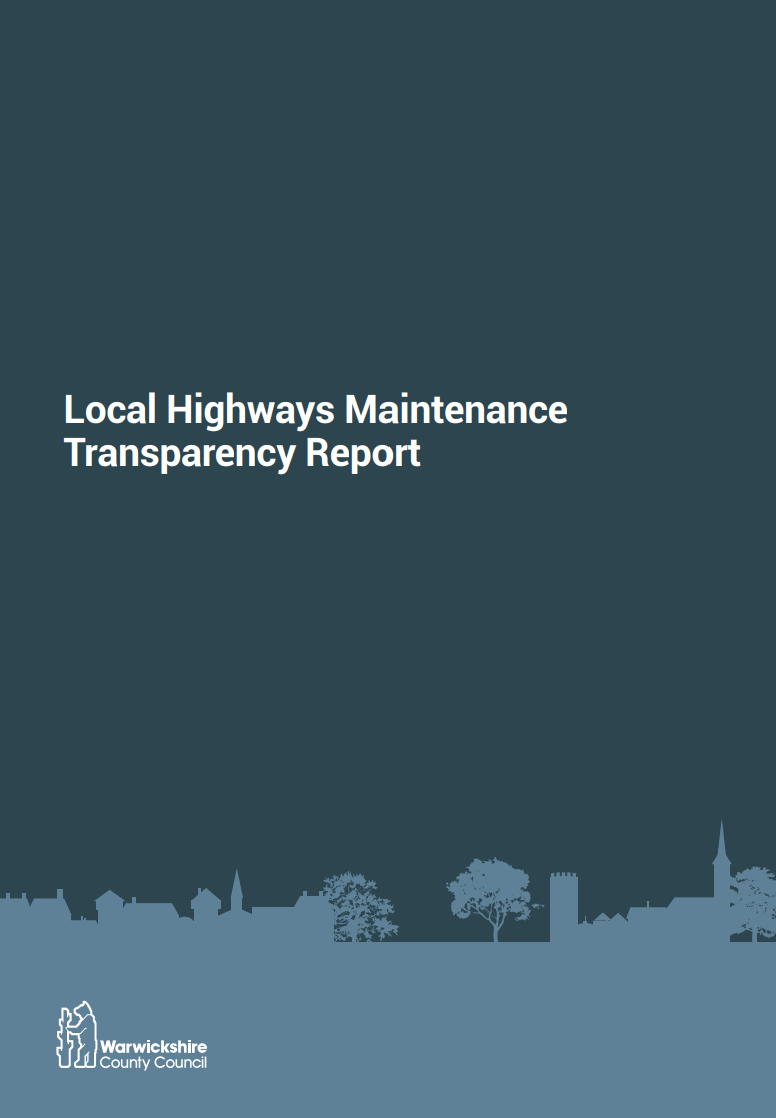Plans
Overall strategy
We are committed to making our roads better and safer for everyone. We manage our highway infrastructure through effective highways asset management and compliance with the principles of the Well-managed Highway Infrastructure Code of Practice.
By using a risk-based data-led approach, we can manage, operate, and enhance our highway network more efficiently and within available budget and resources. We plan long term, making smart decisions about where to invest in maintenance and improvements.
Key elements of our infrastructure asset management include:
- Taking a life cycle approach
- Developing cost-effective management strategies for the long term.
- Providing defined levels of service and monitoring performance.
- Managing risks associated with potential asset failures.
- A sustainable approach to the use of physical resources.
- Continuous improvement in transport asset management practices and processes.
We have a duty to maintain our highways outlined in several pieces of legislation. We have dedicated teams managing our highway assets, including streetlighting, traffic signals, bridges, carriageways and footways and anything else within the highway infrastructure, such as drainage.
We use data to decide where and when to carry out maintenance, whilst also considering the most suitable repair. This helps us to develop costeffective strategies that keep our roads in good condition over time.
Types of highway maintenance we are responsible for include:
- Routine/cyclical: Such as lamp replacement, drainage cleansing and cutting vegetation.
- Reactive: Responding to customer reports, undertaking ad-hoc inspections, or dealing with emergencies like pothole repairs or localised flooding.
- Planned/Preventative: Planned schemes based on asset lifecycles to extend its life or renew it such as carriageway resurfacing or surface dressing.
- Regulatory: Inspecting and regulating the activities of others affecting the highway
- Winter Service: Gritting and snow ploughing in adverse weather
We also consider wider environment and sustainability implications. Through effective management of our assets, innovation and by specifying the right type of repair at the right time, we can reduce our impact on the environment and take action to tackle climate change.
At Warwickshire County Council, we prioritise best practices, innovation, and efficiency in managing our highways.
We regularly assess our highways and strategically plan maintenance activities using a data-driven approach. Our commitment to long-term preventative maintenance over short-term reactive repairs helps extend the lifespan of our highway infrastructure and reduce overall maintenance costs and network disruption. Our proactive ‘Find and Fix’ pothole repair teams address small defects before they escalate into larger potholes and we invest heavily in surface dressing programmes to seal road surfaces, extend their lifespan and prevent costly repairs.
We trial and adopt innovative materials and techniques to enhance road durability and performance while considering environmental and workforce impacts. For instance, we:
- use lower temperature products as standard, to reduce carbon emissions, improve air quality, and minimise public disruption by cooling faster, allowing roads to reopen sooner.
- recycle asphalt arisings into foam mix material for structural layers of our carriageways.
- identify gullies requiring more frequent cleaning due to flooding risks cleaning every three or six months, depending on the risk level.
We benchmark our performance, collaborating with others, particularly within the Midland Highway Alliance (MHA+), and are members of the National Highway & Transport (NHT) benchmarking club and the CQC Efficiency Network. Tools like the NHT Performance Management Framework help us measure our performance annually against other Local Authorities, identify areas for improvement, and share best practices. We are also members of the Local Council Roads Innovation Group (LCRIG), a platform connecting local authorities, government bodies, industry professionals, and academia to drive innovation and improvement in the highways sector.
We promote transparency and accountability by publishing detailed reports on our maintenance activities, network conditions, and future plans. Our upgraded customer reporting platform allows customers to report highway defects directly on a map and receive email updates.
We ensure effective coordination with utility companies and other internal council departments to minimise disruption from streetworks and leverage economies of scale.
We use a comprehensive suite of KPIs within our highways maintenance contract to ensure adherence to best practices. These KPIs measure various aspects of contractors’ operations, including expenditure, service quality, and public satisfaction.
